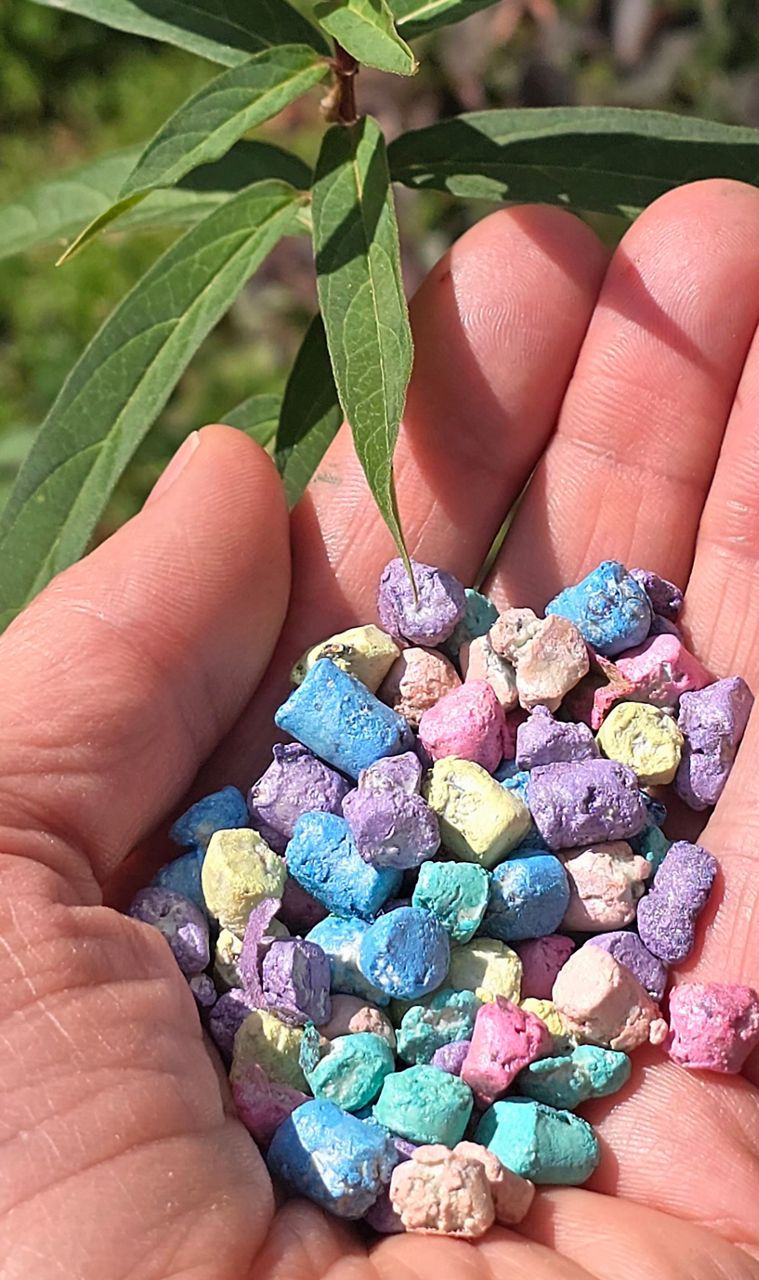Specialty crops in New York like apples and pumpkins rely heavily on pollinators, so researchers at Cornell University developed a technology to make it easier for farmers to plant wildflowers to attract them.
But the big obstacle was finding the right equipment for farmers to plant the milkweed and other flowering plants like purple coneflower, wild bergamot and black-eyed Susans.
“No farmer is going to buy another piece of equipment to plant these small-seeded wildflowers, but they have corn and soybean planters so how can we change something to make it where they can use the equipment they have?” said Antonio DiTommaso, professor of soil and crop science at Cornell.
That led him and his colleague Alan Taylor to develop a pellet that would have the same shape and density as corn seeds, but would include milkweed or other wildflower seeds and can be planted with existing equipment.
Milkweed is known to be a food source for the monarch butterfly, whose populations have been declining in North America, according to the U.S. Fish and Wildlife Service. Some threats to them include the conversion of grasslands to agriculture and urban development.
“We’re not talking about taking farmland out of production, but areas that they wouldn’t have cultivated, they could put that in and hopefully be able to get some benefits out of it,” DiTommaso said.
Corteva Agriscience, a national seed company, will distribute these seeds to farmers across the country. They would be planted in areas well suited for crops like between apple tree rows or near the edges of crop fields.

Pollinating increases yields for farmers. Additionally, these wildflowers attract other beneficial insects like natural pest predators.
“Ladybugs happen to love pollen and nectar of almost every plant. Those could be knocking down the pest populations as well,” said Scott McArt, a professor of pollinator health at Cornell University.
Pollinator populations are declining, so increasing the habitat spaces can be beneficial to those species, McArt said.
“We want to do something to improve the situation. Providing resources for them and providing habitat for them is probably the best possible thing we can do,” McArt said.
New York is well-known for the specialty crops like apples, grapes, blueberries and more, all of which need pollinators as they are flowering plants.
“For specialty crops, if we didn’t have [pollinators] there are studies that have shown how many billions of dollars in losses would occur,” DiTommaso said.
Adversely, pollinators add to the specialty crop industry.
“We estimate the pollinators contribute somewhere around $400 million in pollination services to New York fruits and vegetables every single year,” McArt said.
New York is the second-biggest apple producing state in the country, and apple trees are almost fully reliant on pollinators to produce the fruit, McArt said.
“Having [pollinators] is critically important for anybody who grows these crops,” DiTommaso said.



)